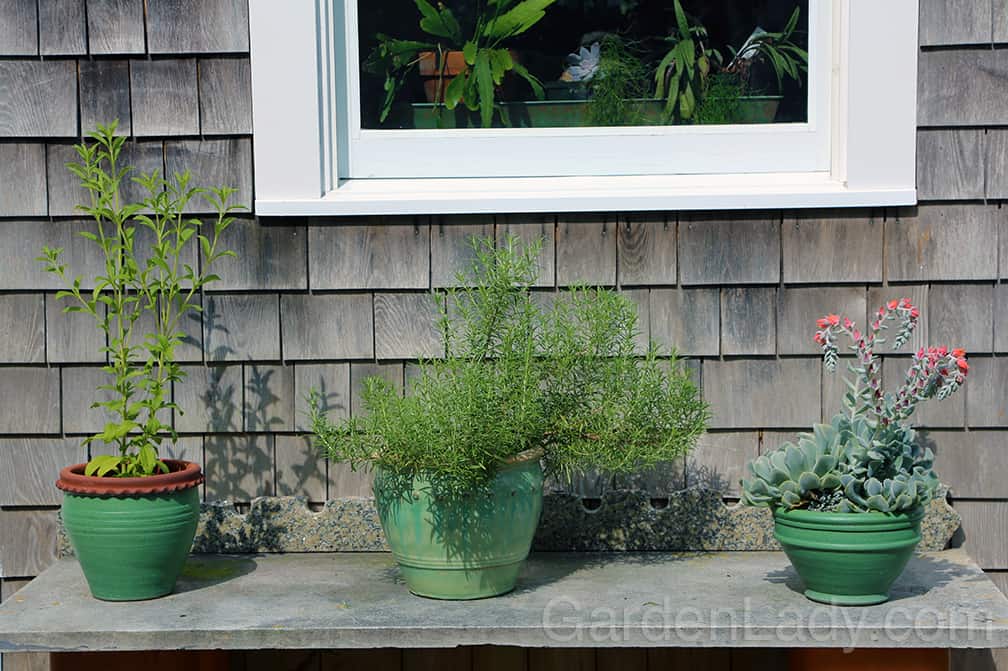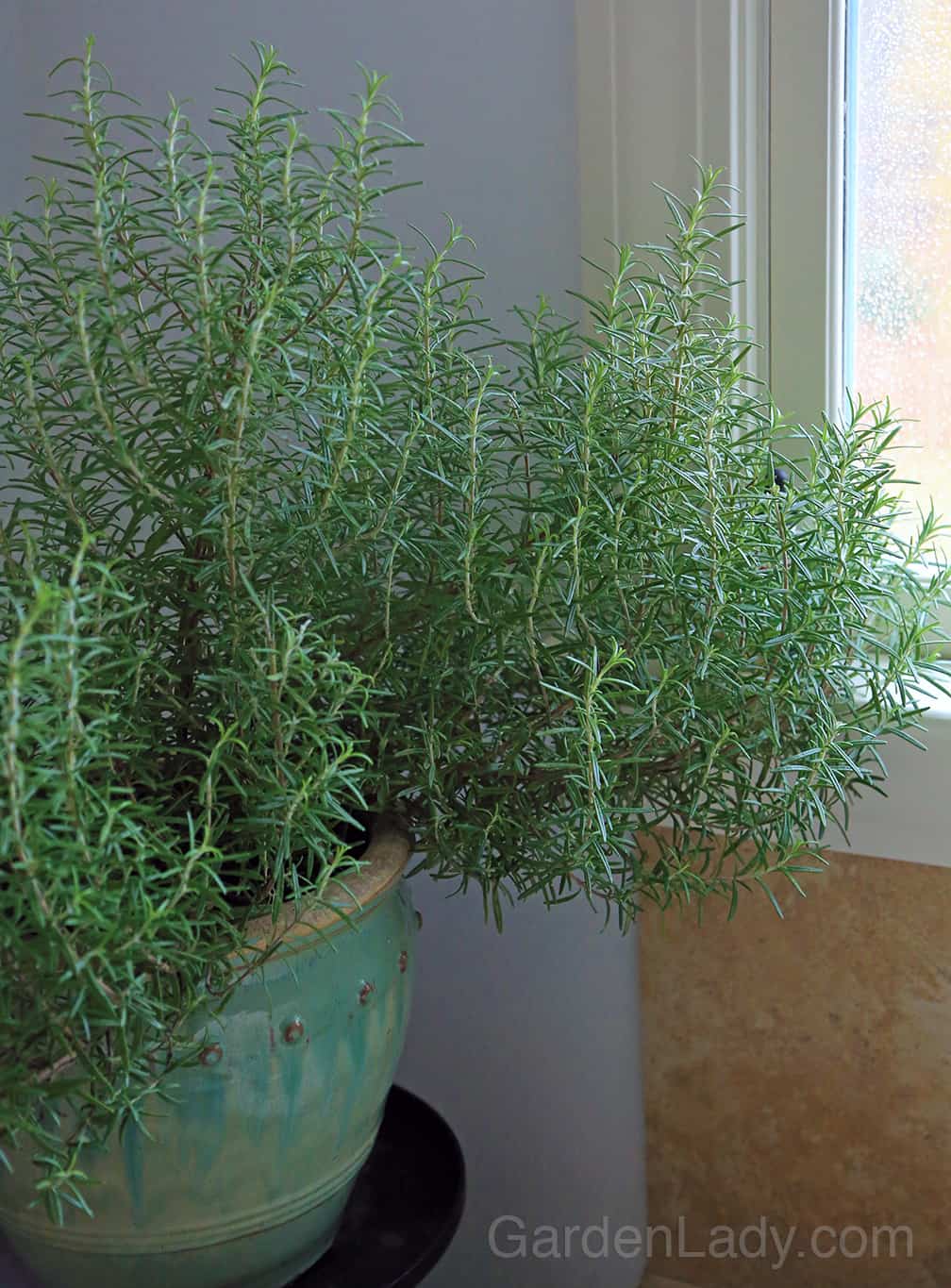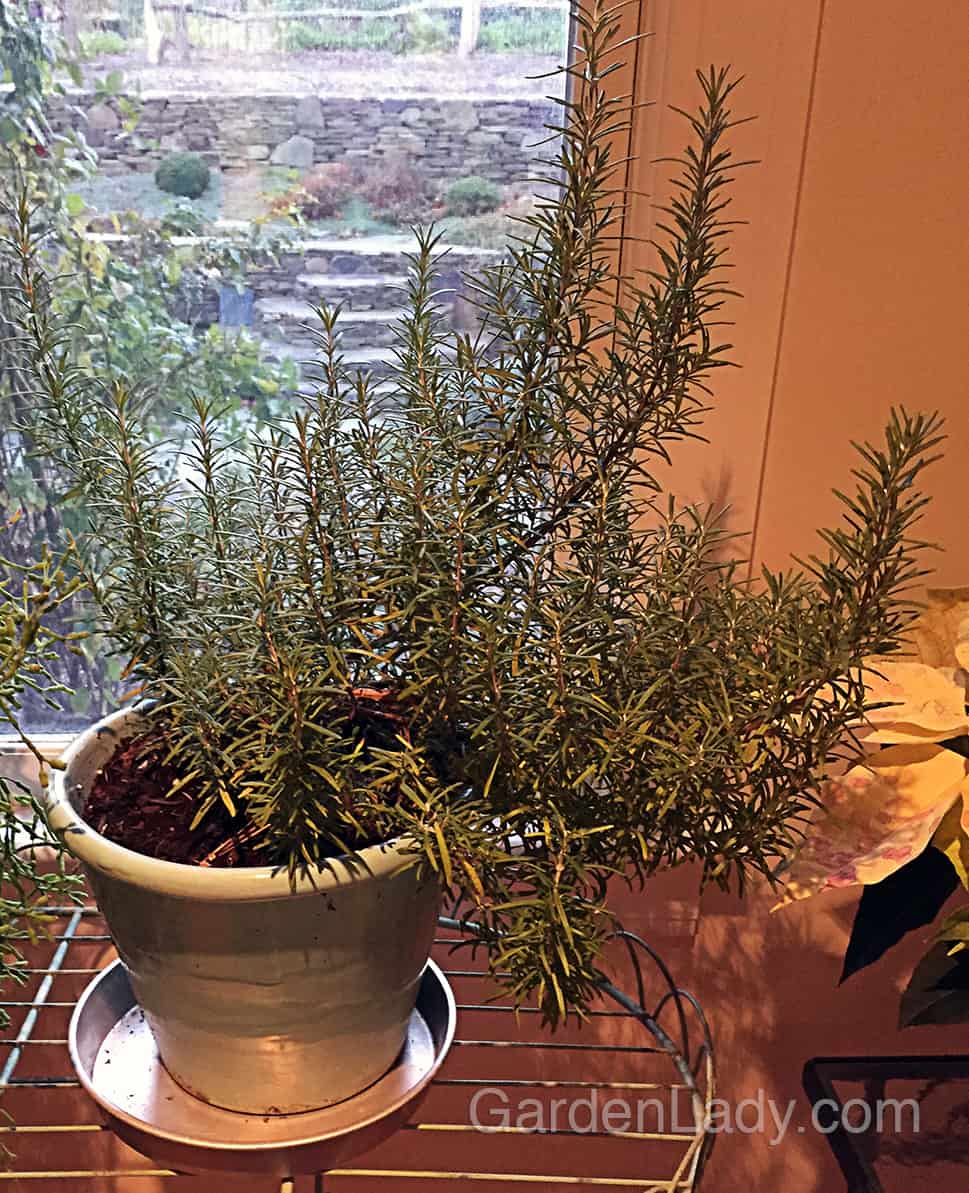Imagine: You love cooking with fresh rosemary at any time of year. Whether it’s fresh-cut sprigs that are tucked into a roasting chicken, dried leaves that flavor toasted walnuts, or pieces mixed with roasted potatoes or other root vegetables, this is a very satisying herb. In fact, you’re planning on using your fresh rosemary to garnish cocktails at Thanksgiving. You will also tuck sprigs into the small vases of flowers that decorate your long table for the holiday. Being able to snip garden-fresh rosemary in all seasons is satisfying, but it’s especially gratifying as fall turns into winter and we need all the brilliant flavors we can get. Thankfully, your Salem rosemary has traveled seamlessly from garden to house as the cold temperatures arrive.
Name: Rosmarinus officinalis ‘Salem’ aka the Salem rosemary
Type of Plant: An aromatic herb that people in the Northeast grow as an annual or container plant, but those in a warm zone 7 through 10 can grow as a shrub. (Don’t get your hopes up, Cape Cod…the USDA might have us listed as a zone 7 but most people on the Cape are in a warm zone 6.)
Why I love this: Whether you can grow Salem rosemary outdoors as a shrub or inside as a pot plant, this is a fast-growing and flavorful herb. Often people have trouble keeping rosemary alive in containers indoors. Sometimes this is due to poor watering or powdery mildew (see below) but often it’s because a rosemary needs long days to do well.
Of course at this time of year the days are getting shorter. And once you bring a plant indoors, the amount of light available to plants is even less. So any plants that require more hours of sunlight per day can suffer when they are inside in the winter. Most rosemary plants fall into this grouping. The variety ‘Salem’ seems to be less sensitive to decreasing hours of daylight, however, so it’s more likely to live through the winter indoors.
A Word to the Wise: If you want to be successful overwintering a rosemary, grow it in a pot over the summer so you don’t have to dig it up in the fall. Secondly, place that pot in the sunniest window you have. Watch out for powdery mildew and if you see it, spray the plant with an edible, organic fungicide. Clip off the weak, new growth that appears over the winter. And finally, keep your plant watered regularly. Never let a rosemary wilt or it’s likely to die

When grown outside in a container Salem rosemary grows quickly. This is a photo I took in August and the rosemary plant in the center was purchased in late-May as a 5″ tall, small plant. Grow rosemary in at least 5 hours of direct sun. In hot weather container grown plants might need watering every day.

Be sure to clip the leaves on your plants regularly in the winter. Use them in cooking, for garnish, or even in your bath water.

Herb lovers have a saying: “A dry rosemary is a dead rosemary.” Sometimes this plant will need watering every three to five days indoors – often more often than your other houseplants.
.

My rosemary was brought in when I bout it potted! It is turning dry as if it’s dying! I watered it very good, but it’s dropping leaves. I live in the South while temps are in the low forties will a growing lamp help it survive
You can try a grow-light but usually when an indoor rosemary browns it has dried up between waterings. What is a very drought tolerant plant outside has a thick root system that fills the pot indoors. So be sure to put a saucer under the pot and when you water, water very well so that you know the entire root ball is saturated. But know this about some varieties of rosemary: some are more sensitive to less daylight than others. If you have one of those, a grow light that stays on 14 hours a day might help. But there’s no shame in cutting the foliage that’s left and using it in cooking, then buying a new plant for outdoors when spring comes.